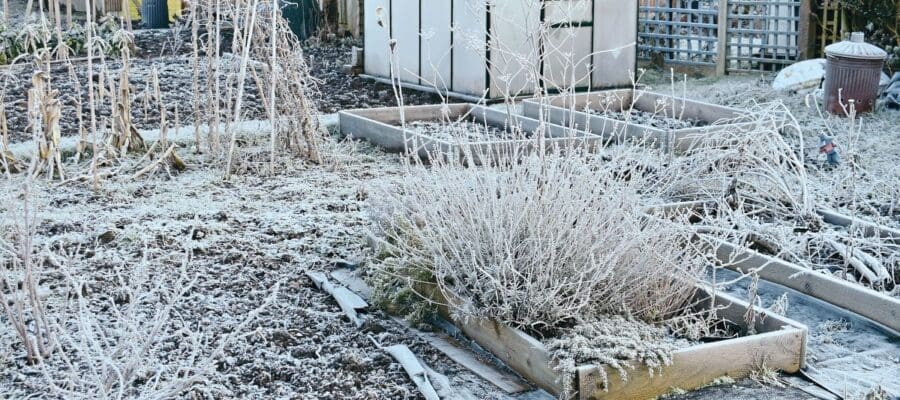The sight of frost may send a shiver down our spines on a chilly winter morning but its many benefits should not be overlooked, as Becky Searle explains
I pull my duvet up around my ears, cold, despite the four walls around me. Bravely, I lower my feet over the side of the bed and pull on my dressing gown. Yawning and rubbing the sleep from my eyes, I open the curtains and am horror-struck. Frost is curling its icy fingers around everything in the garden – every leaf and surface glints in the misty morning sun. The nasturtiums have darkened and drooped overnight, and the dahlias are sparkling a final farewell.
My horror turns to an appreciative smile when I remember I have already taken in my tender crops, and there is no need to panic. My pumpkins and squashes are stored inside. My tomatoes have been canned, and my chillies safely turned to jam. I pull on my shoes, wrap my hands around a hot mug of coffee and step outside. The grass crunches beneath my feet, and the air is crisp and sharp. It feels like the beginning of something new – a different chapter in the garden.
Enjoy more Kitchen Garden reading in the monthly magazine.
Click here to subscribe & save.
Frost can seem devastating at times. Here in the UK, our primary growing season is bookended by the last and the first frosts. New and experienced gardeners alike can fall foul of an early frost if our concentration lapses. Crops that you have tended with love can be mercilessly wiped out. But they’re an integral part of the cycle of nature. A time to clear away the profusion of summer to make way for fresh delights next year.
Frost is incredibly efficient at this. Plants contain a high volume of water in and around their cells; if this water freezes, the cells burst, leaving the plants wilted and unable to recover.
Once the cell walls have been compromised, the leaves and green stems break down fast. When this happens in nature, it gives the soil life a massive boost of organic matter, like what they experience as leaves fall from the trees.
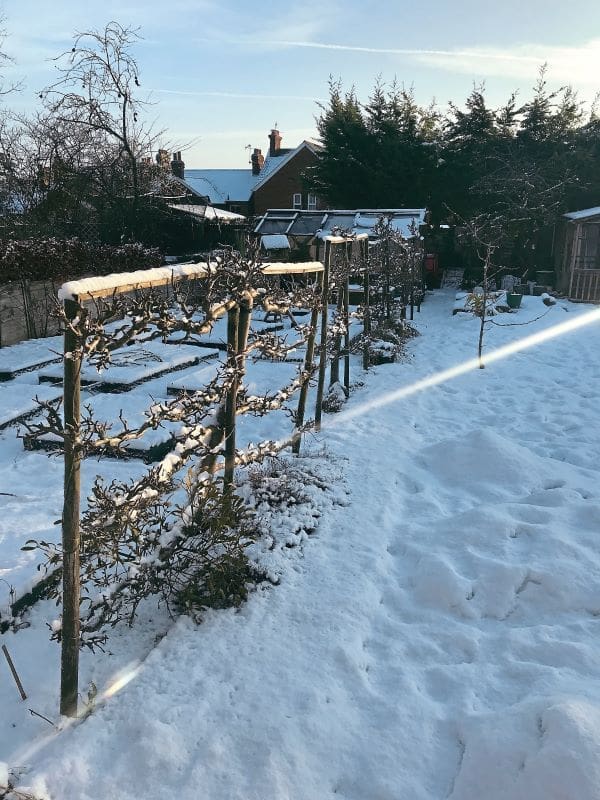

How frost gives a boost of organic matter
At this time of year, this boost of organic matter is much needed. This is because, during the summer, trees and other plants are photosynthesising and pumping carbohydrates into the soil, feeding the soil life. Photosynthesis is significantly reduced in winter with reduced light levels, colder temperatures, and bare branches. So, the soil life needs all the extra food it can get. Plants already partially broken down by frost are easy pickings for soil organisms and a perfect early feed for the soil.
Layers of organic matter, such as fallen leaves and plants killed off by frosts, also add a protective layer to the soil, which acts like an insulating blanket for life in the soil. Of course, frost can penetrate the soil, too, sometimes leaving the ground hard for many months.
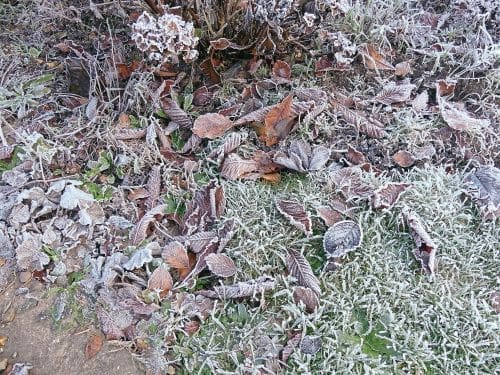

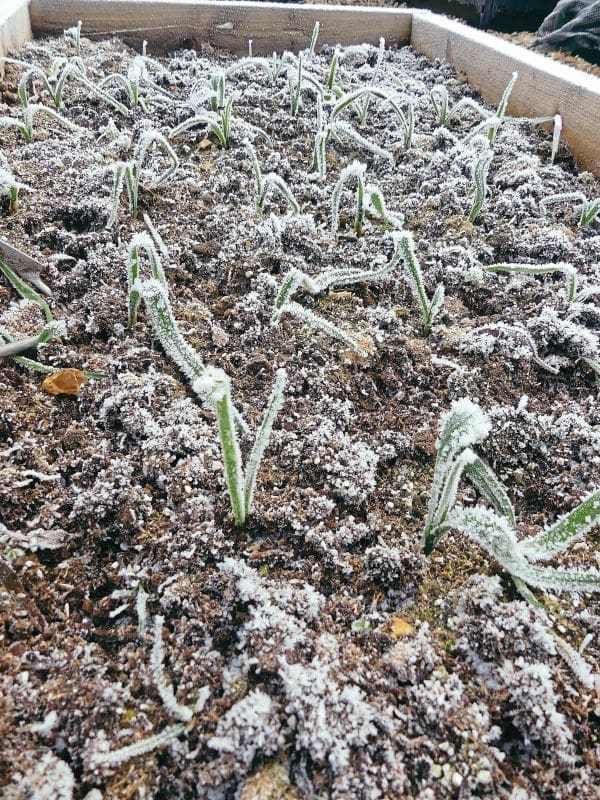
Some soil organisms are known to be killed by frost in much the same way as plants; water in their cells freezes, and essentially they explode. Perhaps this is why autumn leaves fall to the ground when they do, so that this organic matter can protect the top layers of soil and give the more mobile organisms some food for when they are forced to retreat further into the soil.
Some organisms overwinter in the soil, like flea beetles and slugs (everyone’s favourites!). As they are forced underground in the winter, they are subject to a different set of rules. If we have healthy and biodiverse soil it is often the case that the life in the soil can ‘manage’ these pests for us over winter, reducing the numbers that resurface in spring.
The very presence of bacteria and other micro-organisms in the soil breaking down the organic matter in the top layers of the earth raises the temperature. These tiny organisms have body heat, and because of the extremely high concentrations of these organisms in the top layers of healthy soil, a small amount of heat will be generated in the upper layers.
Along with the soil heat back effect (the ability of the soil to absorb heat from the sun and slowly release it over time), the net result is that the top layers of the soil are more protected from frost than other surfaces such as plant leaves, that hold little to no warmth of their own. Therefore, some creatures are driven underground, to enjoy nature’s own heated blanket through winter.
Winter crops
Many of us gardeners do not care much for what goes on in the soil during winter. As long as those dreaded flea beetles don’t come back next year, we wouldn’t give it a second thought. Instead, we are somewhat more preoccupied during this time with our stomachs. And rightly so! In the days before central heating, insulation, and polar fleece, it would take a great deal of energy to maintain our body temperatures through winter. Lucky for us, winter crops such as brassicas, root vegetables and winter salads are nutrient-dense, full of protein and delicious in a stew. This time of year, we crave these types of food because they are warming and hearty, just what our bodies need.
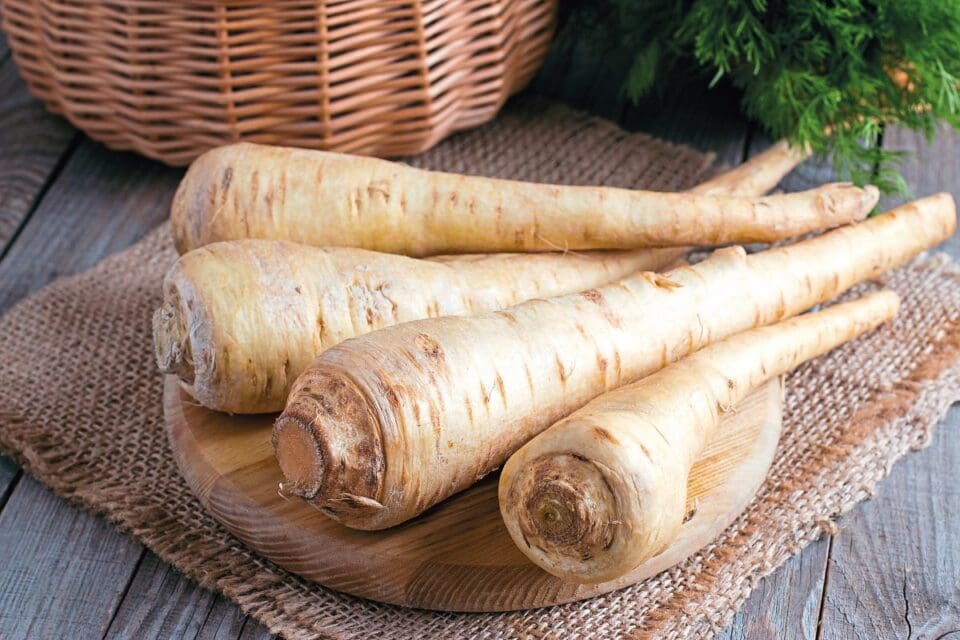
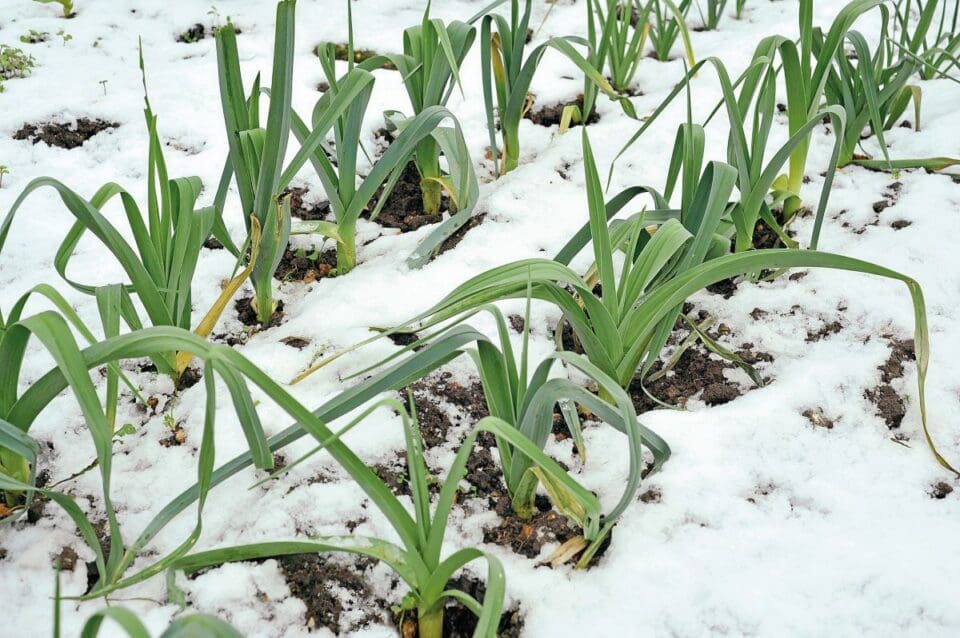

Aside from just craving these types of foods, our winter crops taste better in winter too. Freezing temperatures trigger a reaction in plants to produce more sugars. These sugars, which are stored in the leaves, stems and roots, add to the plant’s defences against freezing.
Winter-hardy plants have proteins in their cells and the spaces around their cells that form a natural type of antifreeze. Therefore, they don’t wilt when hit by frost because their cells do not break down. The sugars they produce because of exposure to frosts build on these defences. It’s costly for a plant to produce sugars, so our crops only do this if their lives depend on it – lucky for us, the result is that they get sweeter and more tender.
So, crops that may not have seemed too appealing in summer suddenly taste and feel like the most decadent treats!
How frost benefits trees
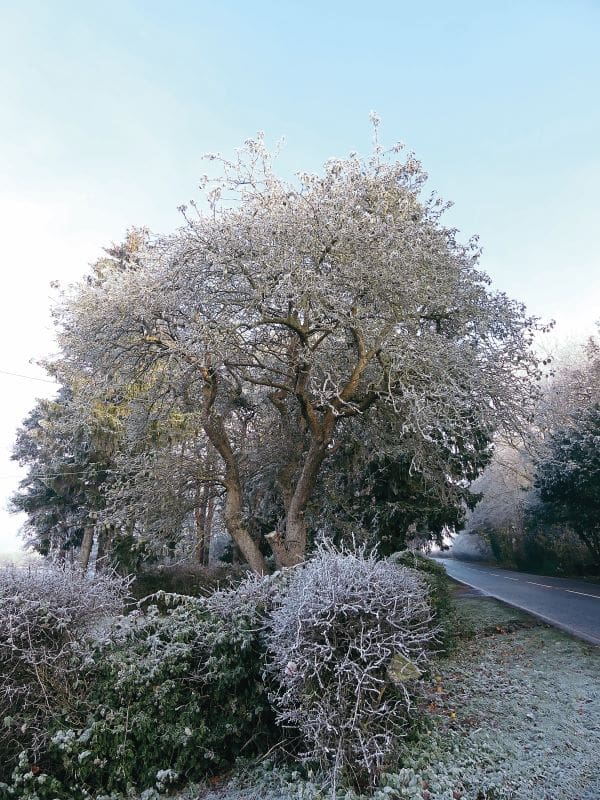
Of course, trees that lose their leaves have another protection against frost. They gather the nutrients – primarily nitrogen – from their leaves, then let them fall to the ground. The woody branches and stems are protected from frosts the same way as winter-hardy crops, and the tree enters a period of dormancy. It has been shown that this period or senescence and rest is essential for trees. It allows the tree respite to strengthen its roots and trunks. The action of strong winds in winter encourages stem thickening and better root penetration into the soil.
The net result is that our trees come back in spring fit and healthy, ready to take on another growing season. Many pests and pathogens that affect trees are also killed off by frosts or are left unable to maintain themselves without leaves and sap to feed on. The ecosystem that affects the tree’s canopy is reset.
So next time you have that awful sinking feeling brought about by a heavy frost or perhaps even a suspicious-looking heavy dew – remember, frosts have their role in the ebbs and flows of growth and nature. Take a moment to appreciate their beauty, even if they have decimated your dahlias or nuked your nasturtiums.
 Enjoy more Kitchen Garden reading in the monthly magazine. Click here to subscribe.
Enjoy more Kitchen Garden reading in the monthly magazine. Click here to subscribe.
Sign-up to the Kitchen Garden Magazine Newsletter
Enter your e-mail address below to see a free digital back issue of Kitchen Garden Magazine and get regular updates straight to your inbox…
You can unsubscribe at any time.
About the Author
- Why is frost important in gardening? - 14th February 2024

